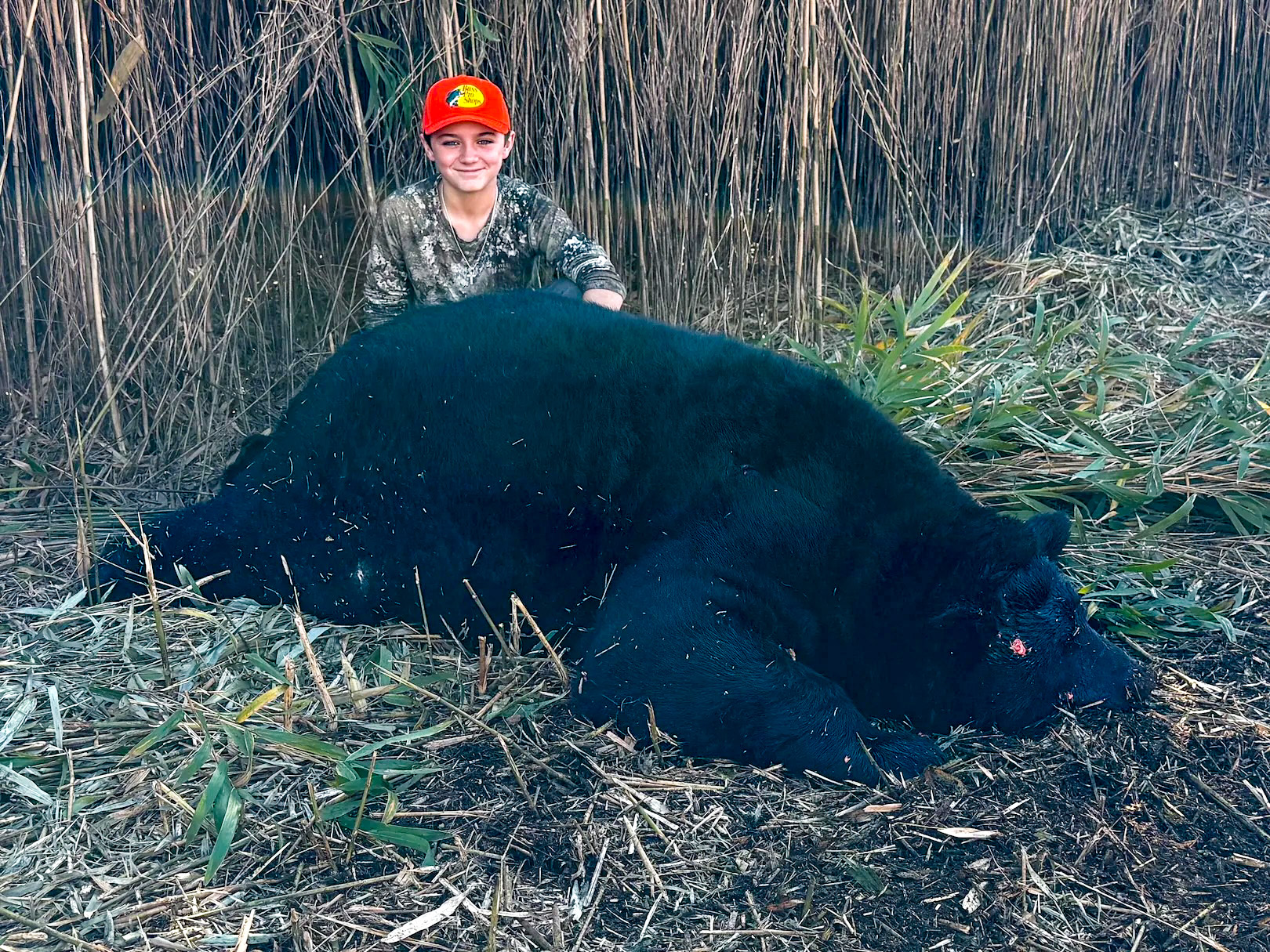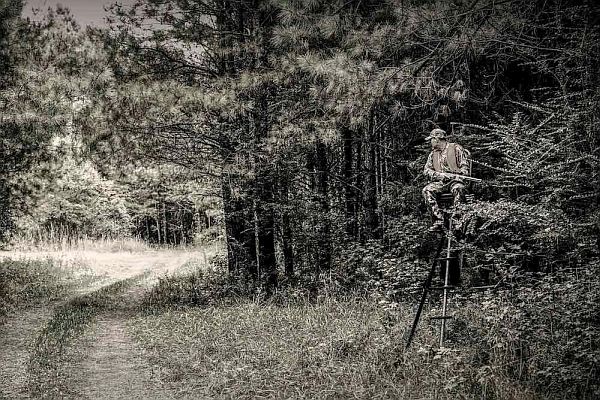Jerry Stucki and his 12-year-old grandson, Hudson Edgar, spent more than a year planning a trip to North Carolina to hunt black bears. Stucki, who served as a Texas game warden for more than 20 years and lives in Austin, had been hunting with Hudson since he was four. But he had never been bear hunting.
“Hudson loves to hunt and fish and just be outdoors. It’s hard to afford it on a retired game warden’s salary, but we try to do as much as we can,” Stucki tells Outdoor Life.
Stucki had gotten an itch to chase the big black bears Eastern North Carolina is known for. While the Tar Heel State may not be the first place that comes to mind when you hear the words “bear country,” it is home to one of the largest black bear populations in the U.S., with more than 17,000 bears roaming across 60 percent of the state.
But it wasn’t the number of bears in North Carolina that intrigued Stucki; it was their size. With a mild climate, heavy agriculture, and extensive swampland, Eastern North Carolina has the environmental trifecta for producing heavy black bears. The world-record heaviest black bear came out of Craven County in 1998, weighing a whopping 880 pounds. More than 500 bears have been harvested in Eastern NC’s coastal plain that weighed more than 600 pounds, according to the North Carolina Wildlife Resources Commission, including a 780-pound Beaufort County giant taken with a bow in 2023.
Stucki booked a hunt with Adam Boyd’s Tri-County Guide Service for him and his grandson, a straight-A sixth grader at Hyde Park School, a year in advance, hoping to get Hudson a shot on a big black bear.
“That lowland country is just beautiful, and it’s just wild,” Stucki says. “It was the first time I’d ever been [hunting big game] with dogs, and to be quite honest, I had mixed feelings about it. But once I realized where we were hunting and how we had to hunt these animals, I realized it was the only way. The big bears hole up in thick places and the dogs go in where people can’t go. I’d never seen anything like it.”
Hudson saw three bears on Dec. 16, the second morning of their hunt, as the dogs pushed through what Stucki described as unbelievably thick reeds.
“They were just impenetrable,” he says. “I couldn’t walk through them. It was that dense.”
Despite the thick tangle of river canes, Boyd’s hounds flushed several bears into a streak cut through the vegetation to give hunters a clear shot opportunity.
“Hudson took aim on the first one but just didn’t have a good shot,” Stucki says. “The second bear came out and stopped in the clearing for just a fraction of a second. Hudson raised his rifle to shoot, and it just went click. He still had the safety on.”
A third bear came out of the river canes behind them, but Hudson couldn’t get a shot. One bear was holed up in the thicket, and although the hounds were baying like crazy, the bruin wasn’t moving. So, Hudson and three guides decided to creep into the reeds and try to sneak up behind it.
“They went in there, and they got eight feet from that bear,” Stucki says. “I had no idea it was going to be like that. If I had known, I probably wouldn’t have let him go.”
Stucki waited in one of the mowed strips while his grandson went in with the guides. He could hear the dogs barking and then heard Hudson shoot his Rossi .44 Magnum lever action.
“It was a quick kill,” Stucki says of the head shot.
The guides lifted Hudson and tossed him in the air, and then there were plenty of hearty pats on the back. When Hudson came out of the reeds walking toward his grandfather with wide eyes.
“I got a bear,” Hudson told his grandfather.
“Well, is it a good one?” Stucki asked.
“Oh, it’s about 200 pounds,” Hudson teased.
It took a truck and a winch to haul the bear out of the river canes and ten men to lift the carcass into the truck’s bed. Once they got the bear back to camp, it officially weighed more than 200 pounds. Hudson’s black bear weighed an impressive 587.9 pounds before it was dressed.

“They sent it over to a taxidermist because Hudson decided to get a full body mount,” Stucki says. “That gentleman called me and said, ‘You might want to tell your grandson that this is an all-time Boone and Crockett bear.’”
A black bear qualifies for the B&C All-Time record book if its skull measures at least 21 inches by the club’s measuring system. B&C requires a 60-day drying period before a skull can be officially scored.
According to Stucki, Hudson’s bear skull had a green score of 21 ⅛ inches. If it retains those measurements after the mandatory waiting period, it will be included in B&C’s catalog of the biggest game animals ever taken in North America.
The world-record black bear skull, measuring 23 10/16 inches, was found near Ephraim, Utah, in 1975.
Whether or not Hudson’s bear makes it into the all-time records, it is still a special bear — not just because of its size but because of the memories made on the hunt.
Read Next: Hunting Black Bears with the 6.5 Creedmoor
“Hudson’s a godly boy and he’s kind of my right hand,” Stucki says, choking up a little as he speaks. “He’ll drop anything to come see his grandad, and I just love hunting with him.”
As for where a 12-year-old will put a full-body mount of a black bear that size, Stucki laughs and says, “He’ll probably try to put it at my house, but we might have to rent a room somewhere.”
Read the full article here





